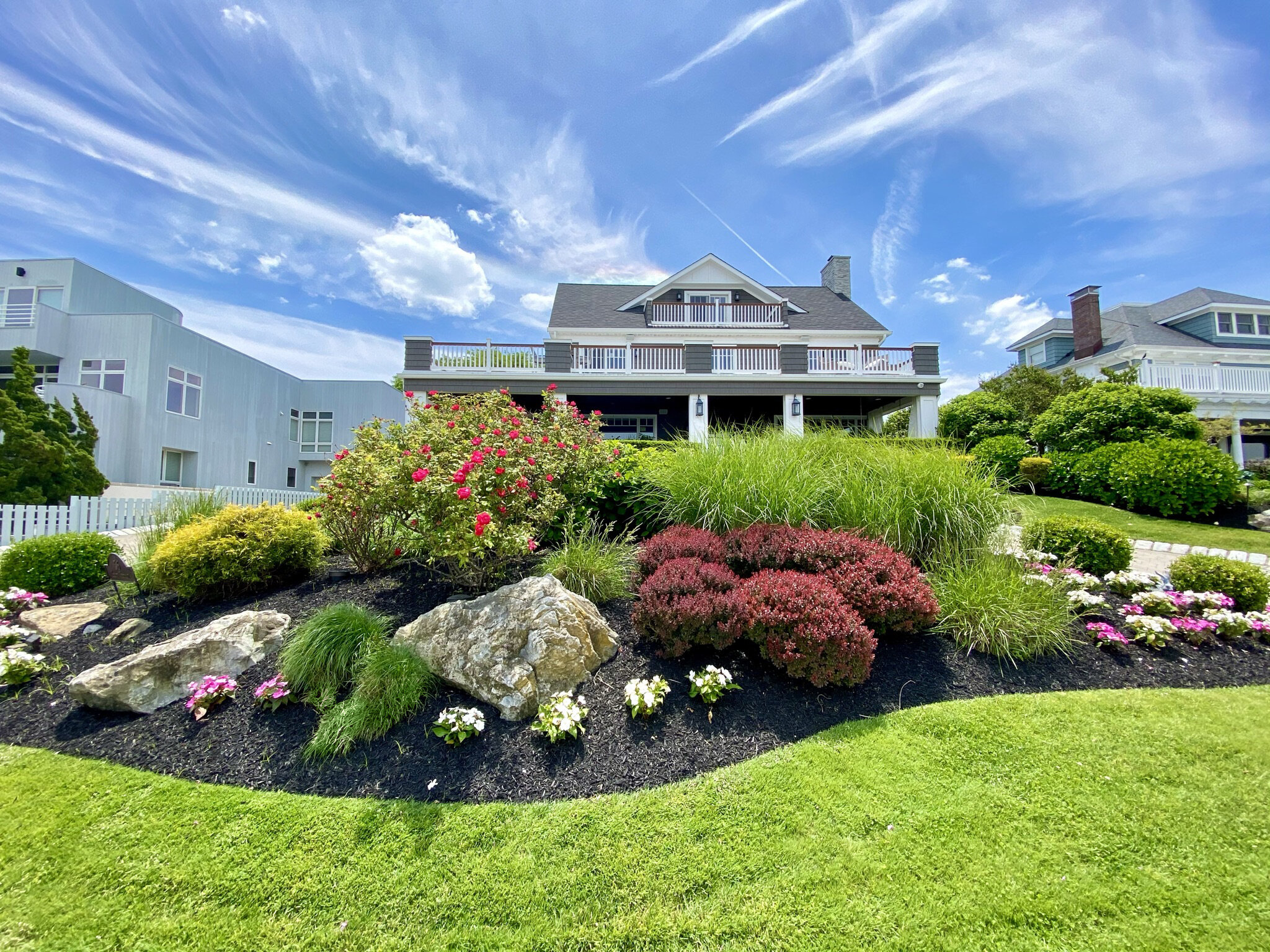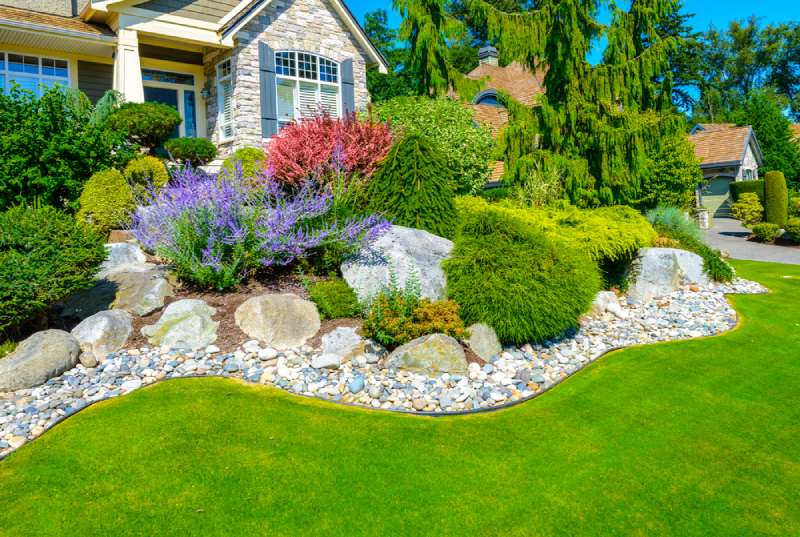Lawn Cleanup Jacksonville: Maintain Your Backyard Beautiful with Professional Lawn Treatment
Lawn Cleanup Jacksonville: Maintain Your Backyard Beautiful with Professional Lawn Treatment
Blog Article
Elevate Your Residential or commercial property's Aesthetic With Sustainable Landscaping Designs and Eco-Friendly Practices

Benefits of Sustainable Landscaping
Carrying out sustainable landscape design techniques not just preserves natural sources but also advertises biodiversity and boosts overall ecological health. One substantial benefit is the reduction of water usage with the usage of drought-resistant plants, rainfall gardens, and efficient irrigation systems.
Additionally, sustainable landscape design can improve dirt health and wellness by decreasing the usage of chemical plant foods and pesticides, thereby producing a healthier atmosphere for plant growth and advantageous dirt microorganisms. This, in turn, boosts the general resilience of the landscape to hold up against environmental stressors and climate change effects - landscaping contractor Jacksonville. Furthermore, lasting landscape design practices can bring in varied wildlife, consisting of pollinators like butterflies and , cultivating a more lively and well balanced community within the home
Incorporating Indigenous Plants
To build upon the benefits of sustainable landscaping, a tactical concentrate on including indigenous plants can better improve environmental resilience and advertise biodiversity within the landscape. Native plants are types that normally occur in a specific area and have actually evolved to thrive in the local environment, dirt problems, and ecological community. By consisting of indigenous plants in landscaping designs, building proprietors can minimize water usage, lessen the requirement for chemical pesticides and fertilizers, and support the regional wild animals populace.
Including indigenous plants also assists in protecting the special personality and identification of an area's flora. These plants commonly require less upkeep as soon as developed, making them a cost-efficient and lasting landscaping service over time. In addition, indigenous plants can draw in indigenous pollinators like butterflies and , adding to the overall wellness of the ecological community.
When selecting indigenous plants for landscaping projects, it is crucial to choose species that are fit to the specific ecological problems of the website. Consulting with agricultural gardens or neighborhood nurseries can supply important advice on choosing the appropriate native plants for a certain location. By integrating indigenous plants into landscape design layouts, property proprietors can produce lovely, sustainable outdoor rooms that profit both the community and the environment.
:max_bytes(150000):strip_icc()/landscaping-on-a-budget-2131962-hero-2c4072b220ee4bd5944c1a4fe816360e.jpg)
Water Preservation Methods
Reliable watering approaches play an essential role in sustainable landscaping practices, ensuring ideal water preservation efforts in outdoor spaces. Drip watering supplies water directly to the roots of plants, reducing evaporation and overflow.
Along with advanced irrigation methods, xeriscaping is an additional water-saving landscape design strategy that concentrates on making use of drought-resistant plants, mulch, and effective watering to create a low-water landscape design - landscaping company Jacksonville. By picking native from this source plants that are appropriate to the regional environment and soil problems, residential or commercial property owners can minimize the demand for excessive watering, ultimately preserving water and promoting a lasting outside atmosphere
Eco-Friendly Hardscaping Ideas
Enhancing exterior areas with environmentally friendly hardscaping features can add substantially to sustainable landscaping techniques. Opt for materials like recovered wood, recycled concrete, or natural stone to lessen environmental effect when considering hardscaping aspects. These materials not only add a special visual interest your outside area but also minimize the demand for brand-new sources removal.
Applying absorptive paving choices such as crushed rock or permeable concrete can aid decrease water like it drainage and promote groundwater recharge. These alternatives enable rainwater to seep into the ground, stopping erosion and minimizing the worry on stormwater systems.
Incorporating indigenous plants right into hardscaping layouts can better boost eco-friendliness by sustaining regional wildlife and minimizing the requirement for excessive watering or chemical treatments. By incorporating green wall surfaces or upright yards, you can introduce more plants right into city settings, improving air quality and biodiversity.
Integrating energy-efficient lights, such as solar-powered LEDs, into hardscaping designs can minimize electricity consumption and reduced your property's carbon footprint. Prioritizing environment-friendly hardscaping concepts not just boosts the elegance of your exterior room yet also shows a commitment to environmental stewardship.
Maintenance Tips for Sustainable Landscapes

Routinely prune plants to advertise healthy growth and stop overgrowth that can bring about pest infestations or diseases. Usage natural fertilizers to nourish the dirt and plants without dangerous chemicals that can leach into the atmosphere. For hardscaping elements, such as permeable pavers or stone pathways, routinely tidy them to avoid debris buildup and maintain their performance. By staying positive with maintenance tasks, you can preserve the beauty and sustainability of your landscape for years to come.
Final Thought
To conclude, sustainable landscape design techniques supply many benefits for homeowner, from improving the aesthetic allure of the environments to promoting ecological preservation. By integrating native plants, executing water preservation methods, and utilizing green hardscaping concepts, home proprietors can develop gorgeous landscapes that are likewise ecologically responsible. With correct maintenance, sustainable landscapes can thrive and add to a much healthier community for both human beings and wildlife.
Moreover, lasting landscaping can improve dirt wellness by minimizing the use of chemical fertilizers my blog and pesticides, thus creating a much healthier atmosphere for plant development and useful dirt microorganisms.To build upon the advantages of sustainable landscaping, a strategic focus on incorporating native plants can even more enhance environmental durability and promote biodiversity within the landscape. By including native plants in landscaping layouts, residential property proprietors can lower water usage, lessen the demand for chemical pesticides and plant foods, and sustain the local wildlife population.
These plants commonly call for less maintenance once established, making them a sustainable and cost-efficient landscaping option in the lengthy run. By integrating indigenous plants into landscape design designs, residential property owners can produce beautiful, sustainable outside spaces that benefit both the environment and the neighborhood.
Report this page